Codex Sloane 4016 is a 15th century Italian parchment manuscript belonging to a class of books known as herbals. These medicinal treatises recorded knowledge accumulated in the oral tradition about plants believed to possess therapeutic properties. See: one, two, three.

Miniature of plants and a demon - the herb Ypericon, supposed to repel demons

Miniature of a plant and boys standing in the branches of a fruit tree
picking fruit and throwing down to a woman standing below

Miniature of a tree, a spider web, and an eagle

Miniature of plants, including a mandrake plant with a naked male body as the root
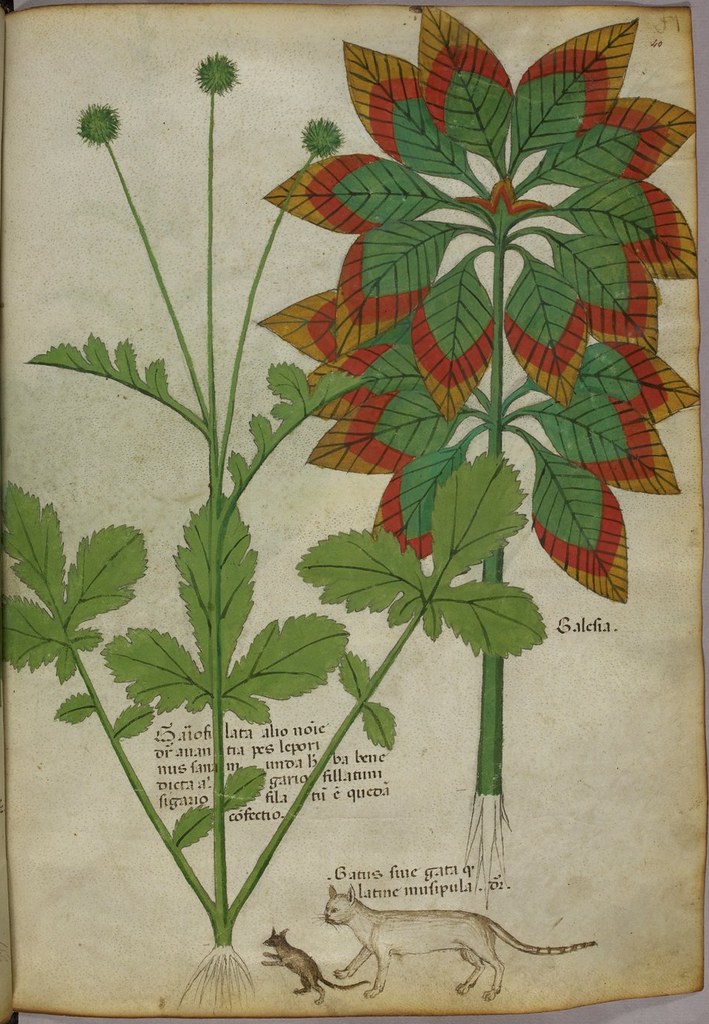
Miniatures of plants, and a cat and mouse
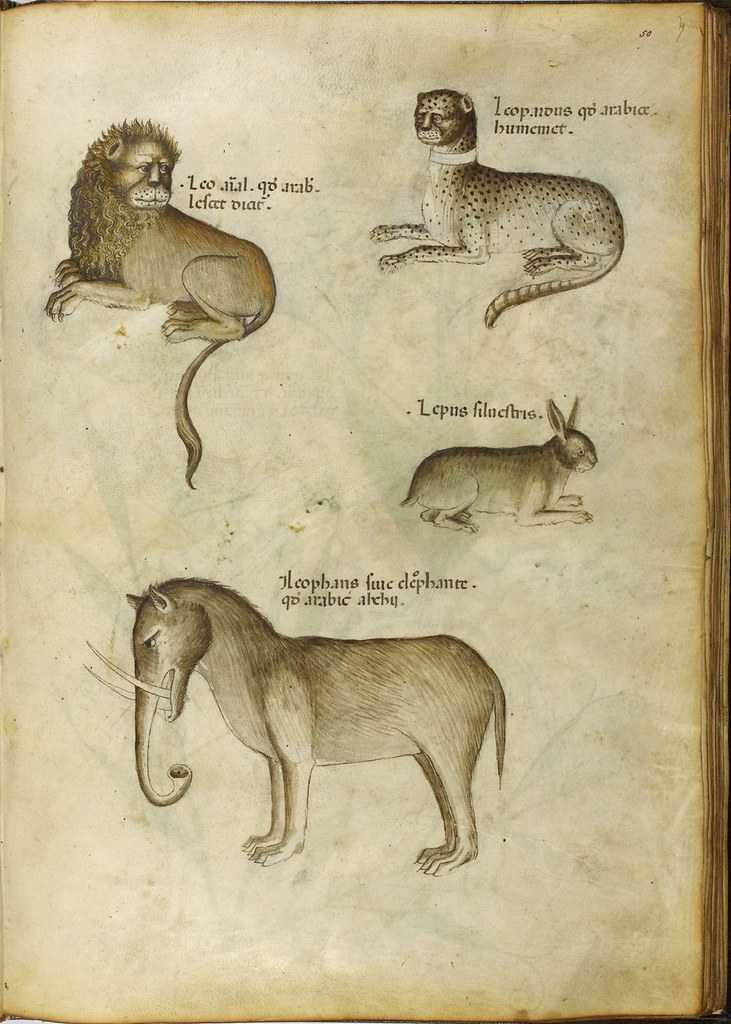
Miniature of a lion, a leopard, a rabbit hare, and an elephant
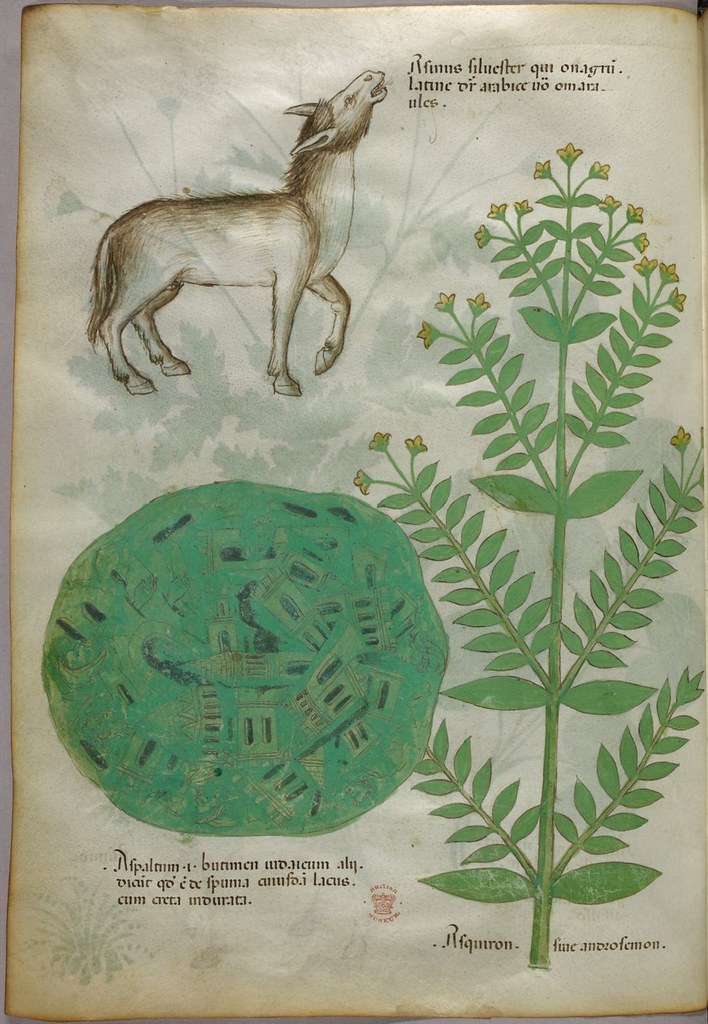
Miniatures of plants, a braying donkey, and a map
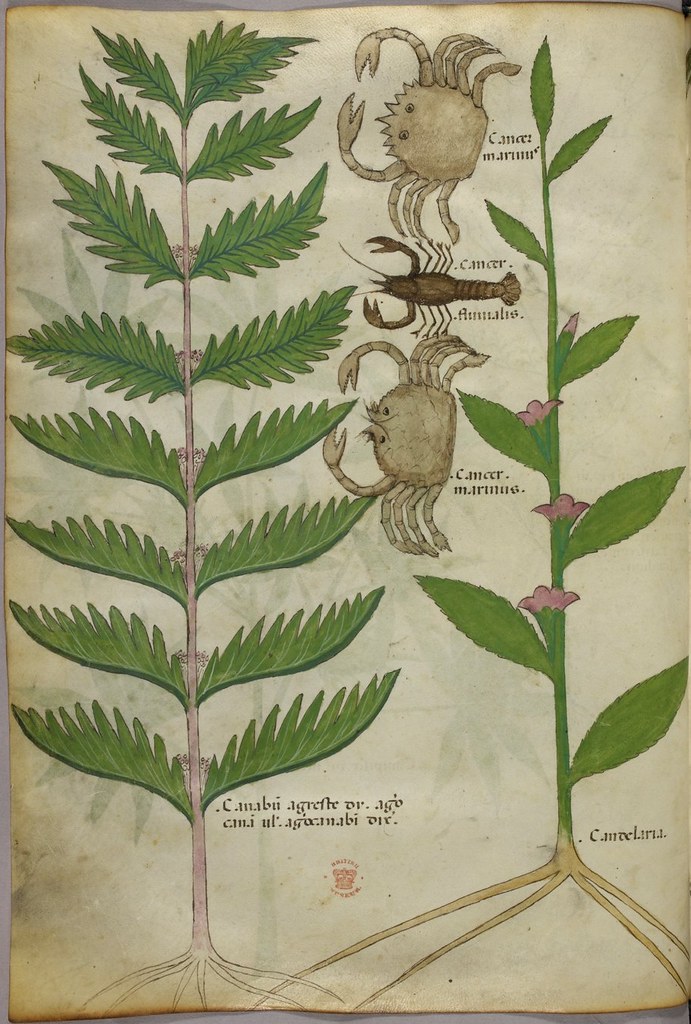
Miniatures of plants, crabs, and [most likely] a lobster-like animal [versus a scorpion as captioned at the source site] (thanks ogerard)
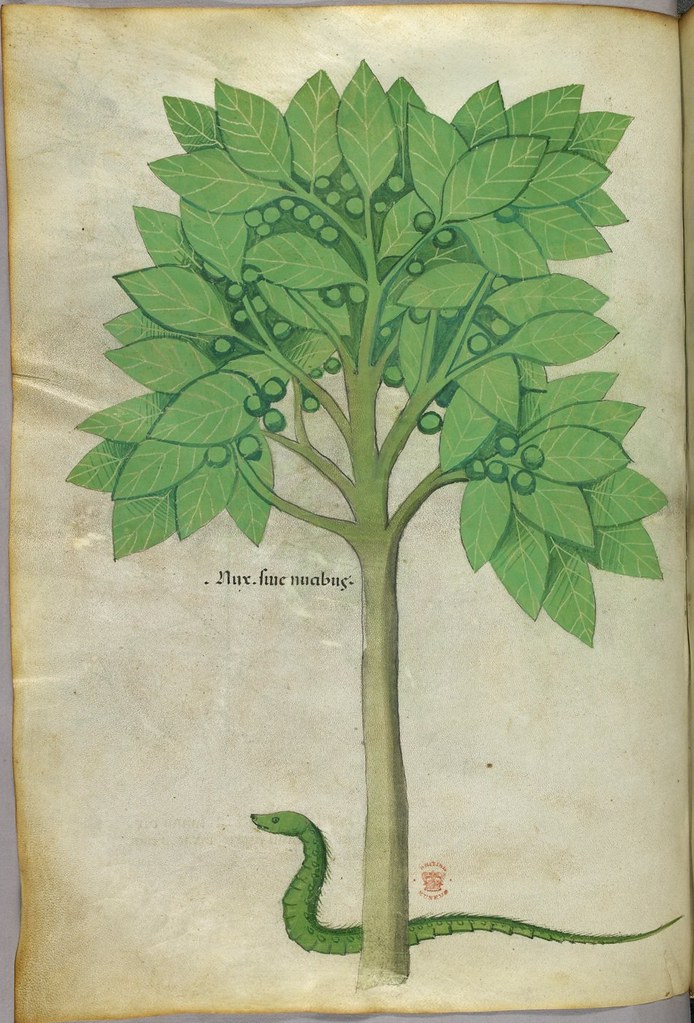
Miniatures of a tree and a snake
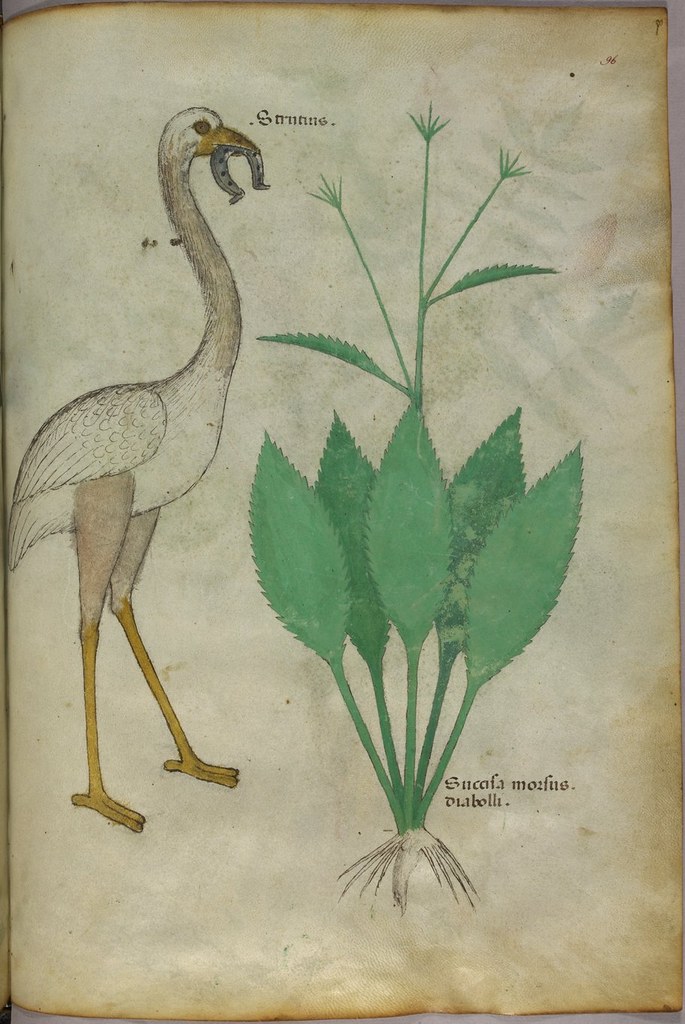
Miniatures of a plant and a bird, holding a horseshoe in its mouth

Miniature of a plant, a cricket, a crane, and a salamander

Miniature of a tree and an animal castrating itself
Produced in Lombardy in Northern Italy in 1440, 'Tractatus de Herbis' consists of over two hundred beautifully illustrated pages accompanied by Latin commentary in a Gothic script.
The whole manuscript (Sloane 4016) is accessible online from the British Library; including enlarged detail images.
A facsimile edition of 'Tractatus de Herbis' is available from the Spanish manuscript reproduction firm of M Moleiro.
VIA: Medieval & Earlier Manuscripts Blog | Miniaturaitaliana.
Previously: flora/medieval.



















13 comments :
I've heard that kastūrī is not only the Sanskrit word for musk, but also a borrowing from the Greek word for beaver. What is the connection between the castor plant, the beaver and castration, anyway? I'm sure I once heard there was one (a connection). Something about how the beaver auto-castrates to remove the hunter's temptation to kill the poor thing. But that isn't a beaver in the picture, is it?
Beaver = genus castor
From here: "The beaver is hunted for its testicles, which are valued for making medicine. When the beaver sees that it cannot escape from the hunter, it bites off its testicles and throws them to the hunter, who then stops pursuing the beaver. If another hunter chases the beaver, it shows the hunter that it has already lost its testicles and so is spared."
As it goes back to at least 6th c. BC, there's obviously great latitude for abstraction of the size and shape of the 4-footed animal of the story. Reading around about herbals emphasises that one of the consequences of the emerging genre of herbals was that falsehoods (eg. the "elephant" above) or local oddities began to be edited out or, at least, in the evolution of the works, scribes and authors tended to eventually coalesce around narrower beliefs and definitions, say.
"The name Ricinus [Ricinus communis = Castor Oil Plant] is a Latin word for tick; the seed is so named because it has markings and a bump at the end which resemble certain ticks.
The common name "castor oil" probably comes from its use as a replacement for castoreum, a perfume base made from the dried perineal glands of the beaver (castor in Latin).[5] It has another common name, palm of Christ, or Palma Christi, that derives from castor oil's reputed ability to heal wounds and cure ailments." [source]
Very fond of the elephant - quite taken with the style of these in general. Thanks for sharing, once more.
In the illustration with two kinds of crabs, the middle animal is not a scorpion but probably a crayfish (cancer fluvialis = river crab).
Yes, of course you're right, thanks. I would have put those captions in quote marks except that there were so many misspellings that I had to correct that they ended up a paraphrase. And, as is sometimes the case, I didn't have a good look at the images until after they were posted here!
The bird in no.10 is labelled strutius, possibly a variant of struthio, an ostrich.
Thanks for these lovely illuminations
Vraiment magnifiques ! merci
Even if the drawings are quite approximative, some plants can be recognized:
- first plate, from the left to the right: Ydropiper (water pepper, now it's latin name is Persicaria hydropiper); Xylocaracta (old name from carob tree, Ceratonia siliqua); Ypericon (old name from St John's wort, Hypericum perforatum)
- 2nd plate: "Cepe domestice" (onion, Allium cepa); Cerazia (cherry tree)
- 3rd plate: the tree is an orange tree (names "Arangia")
- 4th plate: Malva (mallow); Mandragora
- 5th plate: Galiofilata -> it looks like a member of the Rosaceae family... it could be Geum urbanum (St. Benedict's herb); ?
- 6th plate: ???
- 7th: Canabi agreste (Lycopus europaeus, gypsy wort) ; Candelaria (not sure... could be an Epilobium...)
- 8th plate: Nux... could be a walnut tree
- 9th plate:Succisa (Devil's bit scabious!). The bird is an ostrich
- 10th plate: ???
- 11th plate castane (chestnut tree)
:-)
Thank you !!
and surely the 6th leaf shows a hare, not a rabbit?
Aye, indubitably - fixed, taa!
The onion page reads Arabica basal and in Arabic, onion is basala.
Post a Comment
Comments are all moderated so don't waste your time spamming: they will never show up.
If you include ANY links that aren't pertinent to the blog post or discussion they will be deleted and a rash will break out in your underwear.
Also: please play the ball and not the person.
Note: only a member of this blog may post a comment.